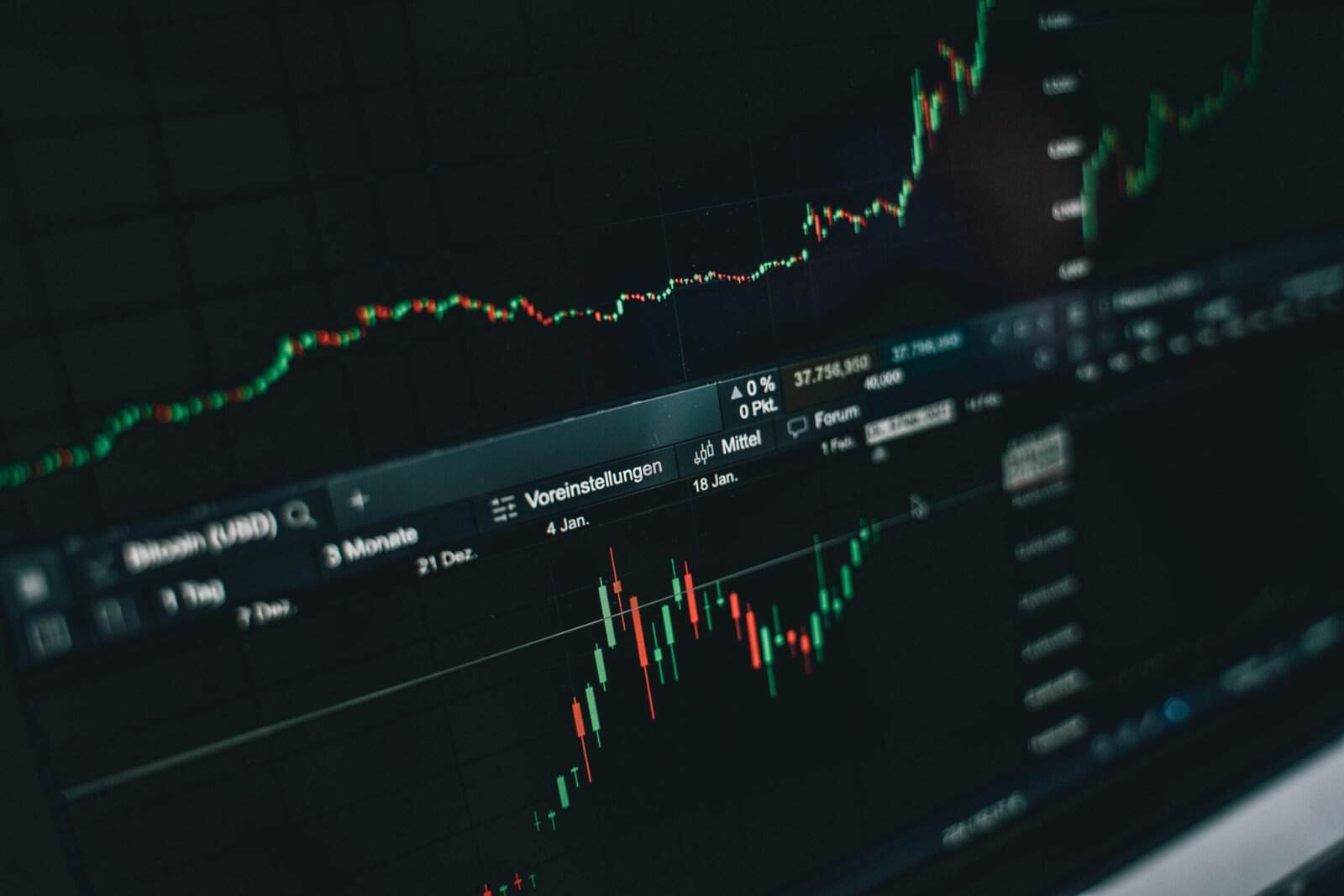Are you curious how shifting rules are reshaping the crypto markets right now?
I’ll explain what’s changed, why it matters to you, and what to expect next. I should note that my direct knowledge stretches through mid‑2024, so I’ll cover concrete regulatory developments up to that point and explain how those trends are likely to shape the remainder of this year and beyond. You’ll get practical takeaways you can act on as an investor, developer, or service provider.
How Are Regulations Changing Crypto Markets This Year?
You’re seeing a maturation of regulatory focus worldwide: authorities are moving from reactive enforcement to structured rulemaking. That shift affects trading venues, stablecoins, DeFi, token listings, custody, taxation, consumer protection, and cross‑border flows. Below you’ll find a breakdown by theme and jurisdiction, and guidance on how to adapt.
What’s driving increased regulation?
Regulators are reacting to a mix of market growth, investor losses, fraud cases, and the emergence of new products that blur the line between traditional finance and crypto. Governments also want to preserve monetary sovereignty, reduce illicit finance, and protect retail investors. You should understand that the result is not uniform worldwide: some regulators are restrictive, others are permissive but require strong compliance.
How the regulatory picture is evolving
Expect three broad patterns: clearer licensing frameworks for service providers, detailed rules for stablecoins and tokenized assets, and growing scrutiny of DeFi and yield products. Those patterns will influence liquidity, market access, and institutional participation.
Major global trends and their market impact
You’ll find the landscape shaped by several simultaneous trends. Each trend translates into practical effects for market participants.
Trend: Licensing and registration requirements
Regulators are increasingly requiring crypto exchanges, custodians, and wallet providers to obtain specific licenses or register as financial service providers. That increases compliance costs and raises the barrier to entry.
Impact on you:
- If you use exchanges, you’ll see more platforms marketing “regulated” status — that generally means stronger consumer protections.
- If you’re a project or new exchange, you’ll need to budget for legal and compliance capabilities early.
Trend: Stablecoin regulation
Stablecoins remain a major focus because they’re used for trading, remittances, and payments. Authorities want rules that ensure reserves, redemption rights, transparency, and sound governance.
Impact on you:
- You may see limits on algorithmic stablecoins and more scrutiny of reserve composition.
- Payment rails and on/off ramps could become more predictable as regulated stablecoins become mainstream.
Trend: Token classification and securities law
Regulators continue to treat some tokens as securities based on tests like the Howey standard (in the U.S.) or similar functional assessments elsewhere. That affects token issuance, trading, and marketing.
Impact on you:
- Token issuers often rework token economics or pursue exemptions to stay compliant.
- You might see delistings of tokens deemed unregistered securities on regulated exchanges.
Trend: AML/KYC and transaction monitoring
Anti‑money‑laundering (AML) rules and Know‑Your‑Customer (KYC) requirements are tightening. Regulators expect virtual asset service providers (VASPs) to conduct travel rule compliance and transaction screening.
Impact on you:
- Expect more KYC checks when you sign up for services and potentially increased monitoring of transfers.
- Privacy‑preserving protocols might face legal friction if they prevent required compliance.
Trend: Tax transparency and reporting
Tax authorities globally are improving reporting standards for digital assets. Many countries are clarifying tax treatment and requiring platforms to report user activity.
Impact on you:
- You’ll need better record‑keeping for trades, staking income, and token sales.
- Platforms may provide more automated tax reporting tools.
Trend: Focus on consumer protection and disclosures
Regulators want clear disclosures about risks, fees, and redemption procedures, particularly for retail users.
Impact on you:
- Trading platforms will likely standardize risk warnings and self‑exclusion options.
- You’ll be encouraged (or required) to view clearer documentation before engaging with complex products.
Trend: CBDCs and central bank coordination
Central bank digital currencies (CBDCs) are being piloted and developed in several countries. They affect how monetary policy interfaces with private digital assets.
Impact on you:
- Retail and institutional payment options may expand with CBDC integration.
- Policy coordination around CBDCs could influence cross‑border liquidity and FX dynamics.

Regulatory approaches by major jurisdiction
Regulatory styles differ significantly between jurisdictions. Below is a compact summary of approaches you should know about. The table captures core themes up through mid‑2024 and the likely near‑term emphasis.
| Jurisdiction | Approach & focus | Likely near‑term effect on markets |
|---|---|---|
| United States | Heavy enforcement (SEC on securities, CFTC on derivatives), ongoing legislative proposals for stablecoins, focus on investor protection | Continued legal uncertainty for tokens; large exchanges enhancing compliance; high scrutiny on listings |
| European Union | Comprehensive framework (MiCA and related rules) emphasizing stablecoins, service provider licensing, market integrity | Greater predictability for regulated firms; emergence of EU‑compliant stablecoins; consistent cross‑border rules inside EU |
| United Kingdom | Firm oversight by FCA; focus on consumer protection and payments; licensing for crypto firms | Regulated venues attracting institutional flows; restrictions on marketing to retail in some products |
| China | Continued ban on crypto trading/mining; strong focus on CBDC (digital yuan) | Offshore crypto activity remains; onshore digital asset experiments under state control |
| Singapore | Pro‑innovation with licensing (Payment Services Act), strong AML/KYC expectations | Attractive hub for tokenization and regulated exchanges; clear compliance pathways |
| Japan | Strict licensing for exchanges, clear custody rules, consumer protection emphasis | High standards for custody and disclosure; stable market integrity |
| Middle East (UAE, Saudi) | Rapid regulatory development with sandboxes and licensing to attract fintech | Regional hubs offering licensing alternatives attracting service providers |
| India | Tightening tax and reporting, ongoing regulatory debate about legal classification | High tax burdens but growing institutional interest; regulatory clarity still evolving |
| Australia | AML/CTF rules, licensing, tax guidance | Strong compliance environment with focus on reporting and consumer protection |
You should use that table to prioritize where you want to engage based on your risk appetite and need for regulatory certainty.
How specific sectors are being regulated
Regulation varies by sector. Below are the main areas you’ll encounter and what to expect.
Exchanges and trading platforms
Regulators want exchanges to implement robust AML/KYC programs, operational resilience, custody safeguards, and transparent order matching. You’ll see licensing requirements and oversight focused on market manipulation prevention.
What you should do:
- Prefer regulated exchanges for significant capital.
- Check for proof of reserves or third‑party audits.
- Expect stricter listing criteria and possibly reduced token variety on regulated platforms.
Stablecoins and payment tokens
Stablecoins are being treated like payment instruments or electronic money in many places. Regulators insist on reserves, redemption rights, and systemic risk mitigations.
What you should do:
- Favor fully‑backed, audited stablecoins for settlements.
- Be cautious with algorithmic stablecoins or unclear reserve structures.
Custody and custody‑related services
Custody rules emphasize segregation of client assets, insurance, and operational controls. Institutional custody providers are often required to meet high governance standards.
What you should do:
- Verify custody arrangements before entrusting large sums.
- Look for regulated custodians or proven institutional custody solutions.
DeFi, lending, and yield products
DeFi remains a complex enforcement priority because protocols can be permissionless and decentralized. Regulators are testing ways to hold entities or operators responsible, and are targeting centralized elements like token issuance, governance bodies, or front‑end operators.
What you should do:
- Assess centralization points in DeFi protocols and regulatory exposure.
- Understand smart contract risk and whether the protocol is likely to be considered a financial product.
Tokenized real‑world assets (RWA)
Regulation for tokenized real estate, equities, or bonds depends heavily on how the token relates to legal ownership. Many jurisdictions apply securities laws to tokenized RWAs.
What you should do:
- Ensure clear legal title and investor protections when participating in tokenized asset offerings.
- Demand legal opinions covering local securities law applicability.
NFTs and digital collectibles
NFTs generally face lighter regulation when they represent pure art or collectibles, but legal scrutiny increases when NFTs confer economic rights (royalties, fractional ownership) or tie to profit‑sharing, which can trigger securities rules.
What you should do:
- Examine whether an NFT conveys investment returns or governance; that signals potential securities treatment.
- Expect marketplaces to tighten seller onboarding and disclosures.

Enforcement trends and notable regulatory tools
Enforcement shapes market behavior as much as laws. Below are enforcement tactics you should be aware of.
Civil and criminal enforcement
Regulators have used civil actions, fines, and criminal referrals against market actors for fraud, unregistered offerings, and market manipulation. Enforcement emphasizes deterrence.
What you should do:
- Maintain rigorous compliance with advertising, disclosures, and registration requirements.
Cease and desist orders and delistings
Regulators may force platforms to delist tokens or stop services. That can create liquidity shocks and user losses.
What you should do:
- Diversify counterparties and avoid overconcentration on a single token or platform.
Licensing and enforcement sweeps
Large‑scale licensing campaigns or sweeps target non‑compliant firms operating at scale. That can reduce the number of service providers but raise overall market quality.
What you should do:
- If you run a firm, secure licensing early; if you’re a user, expect consolidation among compliant providers.
Market impacts: liquidity, volatility, and institutional flows
Regulation changes translate into measurable market effects. Here’s how they typically move the needle.
Liquidity and market depth
Stricter rules can temporarily reduce liquidity as non‑compliant platforms are removed, but regulated venues often attract institutional liquidity over time.
What you should do:
- Anticipate short‑term frictions during regulatory rollouts; consider limit orders and slippage in execution.
Volatility and investor behavior
Uncertainty around legal status of tokens or enforcement actions increases volatility, while clear rules can reduce speculative extremes.
What you should do:
- Manage position size around known regulatory events and be prepared for heightened volatility.
Institutional adoption
Clear rules encourage custody offerings, ETFs, and regulated trading, which bring larger pools of capital. That tends to dampen volatility and increase market maturity.
What you should do:
- If you represent an institution, prepare compliance and custody frameworks to capture inflows.

Practical guidance: how you should respond
Regulatory change is a risk and an opportunity. Here are specific actions you can take depending on your role.
If you’re an investor
- Use regulated exchanges for large trades and custody.
- Keep detailed tax and transaction records; use portfolio trackers that export tax data.
- Conduct counterparty due diligence: check licensing, proof‑of‑reserves, and insurance.
- Understand the token’s legal profile: is it a utility, a security, a governance token, or a payment instrument?
- Avoid overreliance on algorithmic stablecoins or untested DeFi yield strategies.
If you’re a developer or issuer
- Get legal advice on token classification before launch; consider securities exemptions or regulated offerings.
- Build compliance into tokenomics: KYC where needed, clear vesting, transparent governance.
- Consider pursuing licensing in target markets or using regulated partners for custody or fiat rails.
- Prepare for audits (smart contract and financial) and ongoing disclosure obligations.
If you run an exchange or service provider
- Implement AML/KYC policies that meet travel‑rule expectations and transaction monitoring.
- Pursue relevant licenses in jurisdictions where you operate.
- Provide robust proof‑of‑reserves, insurance, and operational controls.
- Maintain clear customer communications and incident response plans.
If you’re in DeFi
- Map centralization vectors: developers, governance admins, front ends — these are often regulatory focal points.
- Consider launching with legal wrappers or creating decentralized governance bodies with documented procedures.
- Prioritize independent smart contract audits and clear user disclosures.
Regulatory risk matrix
This simple matrix helps you judge where regulatory risk is concentrated and which actions can mitigate it.
| Risk area | Likelihood of regulatory action | Potential impact | Mitigation for you |
|---|---|---|---|
| Stablecoins (unbacked/algorithmic) | High | Systemic runs, delisting | Use fully backed coins, prefer regulated issuers |
| Unregistered token offerings | Medium‑High | Fines, delisting, legal exposure | Legal token opinion, consider security exemptions |
| DeFi protocols with centralized control | Medium | Enforcement or requirement to register | Reduce central points, add disclosures, legal structure |
| Cross‑border payments/compliance | Medium | Enforcement, blocked rails | Partner with regulated PSPs, KYC for fiat on/off ramps |
| Privacy‑preserving coins/protocols | Medium | AML friction, delisting in some markets | Monitor compliance developments, limit on‑ramp exposure |

How to monitor regulatory developments
Regulatory regimes change rapidly. You should build a system to stay informed.
- Follow primary sources: regulator websites, official guidance, and rule filings.
- Track enforcement actions and legal opinions in relevant jurisdictions.
- Use reputable industry newsletters, legal firms with crypto practice groups, and compliance vendors.
- Join industry associations that participate in rulemaking consultations.
Common misconceptions you should avoid
- “Regulation will kill innovation.” In most cases, clear rules encourage institutional participation and sustainable innovation.
- “Decentralization makes a protocol immune.” Regulators look at substance not labels; centralization points matter.
- “All stablecoins are equivalent.” Reserve structure, issuer jurisdiction, and governance vary greatly.

Forecast: what to expect next
Based on trends up to mid‑2024, you should anticipate several likely developments:
- Tighter rules for stablecoins, especially those used at scale for payments.
- Greater clarity on DeFi liability, possibly focused on protocols with identifiable operators.
- Continued efforts to harmonize cross‑border rules, though national variations will persist.
- More regulated tokenized asset markets and institutional custody offerings.
- Increased tax reporting, automated by platforms in many jurisdictions.
These shifts will likely make markets safer and more accessible to institutions, while imposing compliance costs that squeeze marginal operators.
Checklist: immediate steps you should take
- Review the regulatory status of the jurisdictions where you operate or hold assets.
- For investors: update tax records, confirm custody, and reassess risky products.
- For issuers: obtain a legal token opinion and consider registration or exemptions.
- For platforms: audit AML/KYC procedures and ensure licensing readiness.
- For DeFi participants: document decentralization and consider governance safeguards.
Final thoughts
Regulation is transforming crypto markets from a fragmented frontier into a more structured financial ecosystem. That transformation brings risks and benefits: higher compliance costs and potential consolidation, but also deeper liquidity, institutional capital, and better consumer protections. You’ll benefit most by staying informed, prioritizing regulated counterparties, and building compliance into designs early.
If you want, I can:
- Summarize specific regulatory actions in a chosen jurisdiction (please tell me which one),
- Create a compliance checklist tailored to your role (investor, issuer, exchange, or developer),
- Draft a short investor guide you can use to assess exchange or token risk.
Which of those would help you next?
